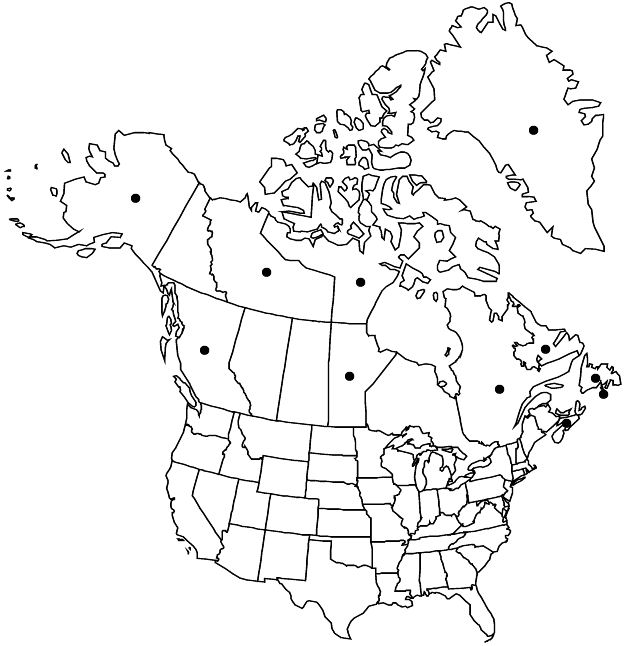Cornus suecica
Sp. Pl. 1: 118. 1753.
Stems erect, green, 5–22 cm, appressed-hairy; nodes 4–7, internodes only slightly longer distally; branches at distal 1–3 nodes, ca. as long as distal internodes. Leaves at basal node nonchlorophyllous, opposite, scalelike, caducous, at remaining nodes chlorophyllous, opposite, well developed, persistent; distalmost leaves similar in size to those at 2 more proximal nodes; petiole 0–7.5 mm; blade ovate or oval, 1.3–4 × 0.7–2.8 cm, apex broadly acute or obtuse, abaxial surface pale green, moderately appressed-hairy, adaxial surface bluish green, appressed-hairy; secondary-veins 3 per side, all arising from near base, occasionally distalmost vein bifurcating in basal 1/5. Inflorescences 5–17-flowered; peduncle 8–20 mm; primary branches 0–0.4 mm; bracts white, often red or purple-tinged, ± equal, ovate, 8–12 × 4–7.5 mm, apex slightly acute. Pedicels 0.7–1.5 mm, moderately appressed-hairy proximally, densely at base of hypanthium. Flowers: hypanthium deep purple, 1–2 mm, very sparsely appressed-hairy; sepals deep purple, 0.2–0.5 mm, apex acute, thick, densely hairy on margins, densely glandular; petals purple, 1.2–1.5 mm, apical awn 0.5 mm; nectary purple or black. Drupes 3–8 per infructescence, red, globose, 5–8 mm; stone usually globose, 2.1–3.4 mm diam., longitudinally grooved, apex rounded. 2n = 22.
Phenology: Flowering May–Jul; fruiting Aug–Oct.
Habitat: Maritime heath, tundra, or copse, along streams, peat banks, bogs, marshes.
Elevation: 0–500 m.
Distribution

Greenland, St. Pierre and Miquelon, B.C., Man., Nfld. and Labr., N.W.T., N.S., Nunavut, Que., Alaska, Eurasia
Discussion
Selected References
None.